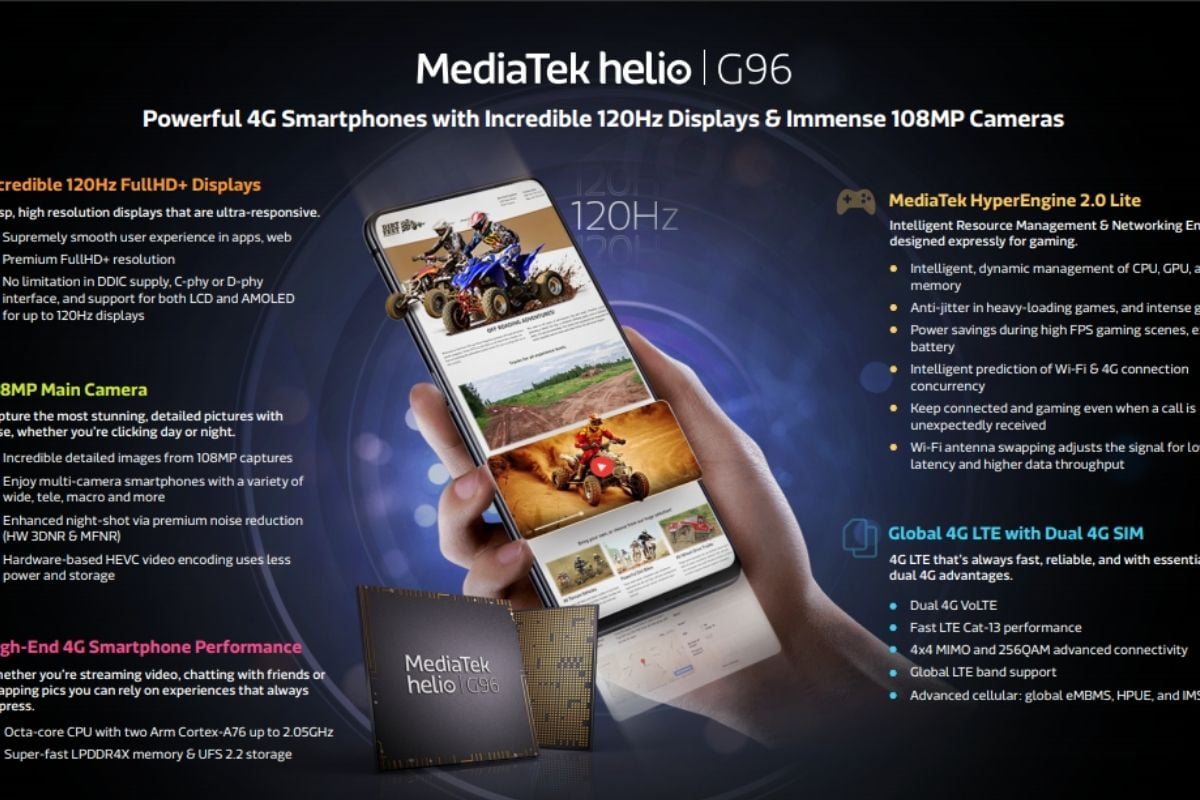Popular chipmaker MediaTek on Thursday announced two new chipsets, the MediaTek Helio G96 and MediaTek G88 SoC for future smartphones. The MediaTek Helio G96 can be coupled with up to 120Hz full-HD+ displays, and can be integrated with 108MP cameras and supports 4G LTE complete with dual 4G SIM cards. On the other hand, the MediaTek Helio G88 supports full-HD+ displays with a 90Hz refresh rate, 64MP camera and 4G VoLTE. Both of these SoCs have been equipped with MediaTek’s HyperEngine 2.0 Lite game technology and will likely be seen in the upcoming SoCs in upcoming Android handsets in the budget to mid-range segment.
What do the MediaTek Helio G88, G96 Chips Offer?
To go in-depth, in terms of the MediaTek Helio G96 SoC, the chip offers support for 120Hz displays with up to Full-HD+ resolution. The display supposedly lacks any sort of limitation when it comes to DDIC supply, C-phy or D-phy interface with the SoC coming with support for LCD and AMOLED displays. The Helio G96 also features two Arm Cortex-A76 CPUs that can operate at up to 2.05GHz. There is also LPDDR4X memory and UFS 2.2 storage. It supports 108MP cameras so as to offer the most detailed images and fast Cat-13 4G LTE WorldMode modem integration, dual 4G SIM and VoLTE and ViLTE services, topped off with the MediaTek’s Intelligent Resource Management Engine and Networking Engine. On the other hand, the MediaTek Helio G88 SoC comes with support for 90Hz refresh rate displays, with the octa-core CPU featuring two Arm Cortex-A75 CPUs that can operate at up to 2.0GHz. The Helio G88 offers support for 64MP main cameras as well as a new hardware depth engine for dual-camera bokeh captures, Camera Control Unit or CCU, Electronic Image Stabilization or EIS and Rolling Shutter Compensation (RSC) technologies. The Helio G88 also offers integrated voice wakeup for voice assistants. The company has added that both SoCs offer support for MediaTek’s HyperEngine 2.0 generation technology that is said to intelligently manage CPU, GPU, and memory so as to enable a smooth gaming experience. It is also claimed to help in power saving matters in high FPS gameplay to extend battery life. The technology is rumoured to enable intelligent prediction of Wi-Fi and 4G connection. This launch comes at a time when most chipset makers have started focusing on 5G chipsets, so the launch of a 4G chip in this day and age seems welcome for budget handsets that might wait to launch 5G handsets for a bit longer.
